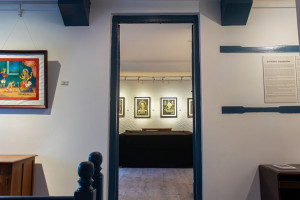Arts
Artists and locals celebrate heritage and sustainable living
The Harisiddhi Art Mela, organised by The Rotary Club of Yala, aims to revive community bonds and foster a deeper appreciation for sustainable living in small settlements.
Post Report
Whenever Newa culture and heritage are mentioned, Patan and Bhaktapur automatically come to everyone’s mind. Unfortunately, other settlements are overshadowed in this celebration of culture. In an effort to highlight the unique heritage of every settlement, The Rotary Club of Yala, along with Hamro Matoghar, E-arts Nepal, and Chiva Chaitya, came together to organise the Harisiddhi Art Mela in Harisiddhi on Tuesday.
The event featured over 50 artworks by 22 contemporary artists, a local school music band, art workshops for three local schools, and stalls offering a variety of local products, including Newa food. The focus of the event was to convey that the richness of Kathmandu Valley extends beyond the prominent cities of Kathmandu, Patan, and Bhaktapur.
The Harisiddhi Art Mela received substantial support from the ward offices of 28 and 29 in Lalitpur Metropolitan City (LMC), as well as from local artists, community leaders, and schools in Harisiddhi. This collaborative effort aimed to shine a light on the often-overlooked cultural treasures of smaller settlements in the Kathmandu Valley.
Newa culture epitomises sustainable living and well-planned settlements. It not only boasts aesthetic beauty but also features a compact settlement structure that prevents land fragmentation and encourages communal living. Suniva Shrestha, the assistant art coordinator, emphasises the importance of understanding the individuality and uniqueness of Newa culture, especially at a time when community bonds and values are weakening. She notes, “By examining the history and characteristics of Newa culture, we can observe a consistent pattern of compact settlements and harmonious community living. This intrinsic yet fading quality can be revitalised through art, as art can influence people.”
Basanta Shrestha, the founder and promoter of Harisiddhi Art Mela and member of the Rotary Club of Yala, is deeply passionate about both the environment and culture. Guided by the principle of initiating change from within, he has even established a ‘Mato Ghar’ which is a sustainable and eco-home built of mud and stone. Shrestha emphasises, “Settlements like Tokha, Bungamati, Harisiddhi-Jala, Thecho, Kipu, Lubhu and Panga boast rich heritage, culture, and history. To preserve, promote, and celebrate these unique cultures, we have launched the initiative starting from Harisiddhi.” He adds that empowering young artists is another key objective of the event.
During the event, local artists proudly showcased their artworks inspired by the everyday life of Harisiddhi. These paintings captured the vibrancy and charm of Harisiddhi, reflecting the daily hustle and bustle. One notable piece, 'Glimpses during Harisiddhi Jatra' by Dilsha Maharjan, portrayed a local elderly man playing the 'madal,' much to the surprise of 62-year-old Vidya Maharjan. Vidya, a resident of Harisiddhi, was astonished to see her husband depicted on the canvas. Her six-year-old grandson eagerly brought her to the painting, exclaiming, "There is a picture of Buwa. Buwa is here." Witnessing such moments warmed the hearts of the onlookers, particularly the artists.
Saruna Maharjhan, one of the artists, emphasised the importance of events like these for new and emerging artists, describing them as a crucial exposure opportunity. In addition to painting, she conducts workshops for students and homemakers, teaching them how to create handicrafts from natural resources and kitchen waste.
Maharjhan highlighted the significance of events held in localities rather than traditional venues like hotels or galleries, stating, “Many people lack the resources or awareness to learn certain skills. Events like this foster community engagement and interest in art and culture.”
Palistha Maharjan, a grade seven student at Prerana Vidya Ashram Secondary School in Harisiddhi, volunteered at the event and expressed her gratitude, saying, “Not everyone can visit the Art Council or art galleries to learn about arts. This is a great opportunity for art enthusiasts like me. Seeing such impressive paintings on display and witnessing people admire them gives me hope that someday, my works can also find such platforms.”
Sani Krishna Maharjan, an emerging artist and a local resident of Harisiddhi, reflects on the changes brought about by the earthquake, stating, “Before the earthquake, houses here were made of mud, providing moderate temperatures in both summer and winter. The loss of our authentic cultural houses has created a void, affecting the bonds and relations within our community. Events like these give hope for the revival of our culture and the essence of sustainable living, acting as a thread to bind us together.”
Erina Tamrakar, a contemporary artist who is also the art coordinator for the Mela, highlights the significance of Harisiddhi Nach, Nepal’s first mask dance, which is relatively unknown. She emphasises the role of the community as a crucial pillar of society and development.
Tamrakar states, “Through collaboration with locals, we aim to promote culture and art from the grassroots level. Locals can support artists, and artists can, in turn, contribute to the local community. As a society, we should understand the importance of this coexistence.” Stakeholders express their commitment to continuing this movement of celebrating heritage through art and culture, with Lubhu potentially being their next destination.




 18.12°C Kathmandu
18.12°C Kathmandu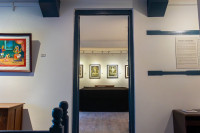
%20(1).jpg&w=200&height=120)
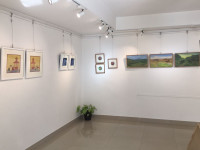
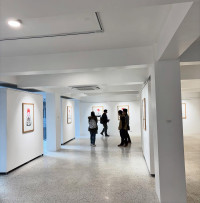
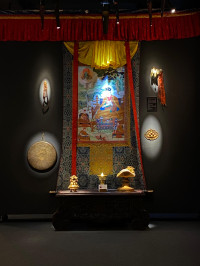
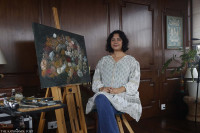
%20(1).jpg&w=300&height=200)
